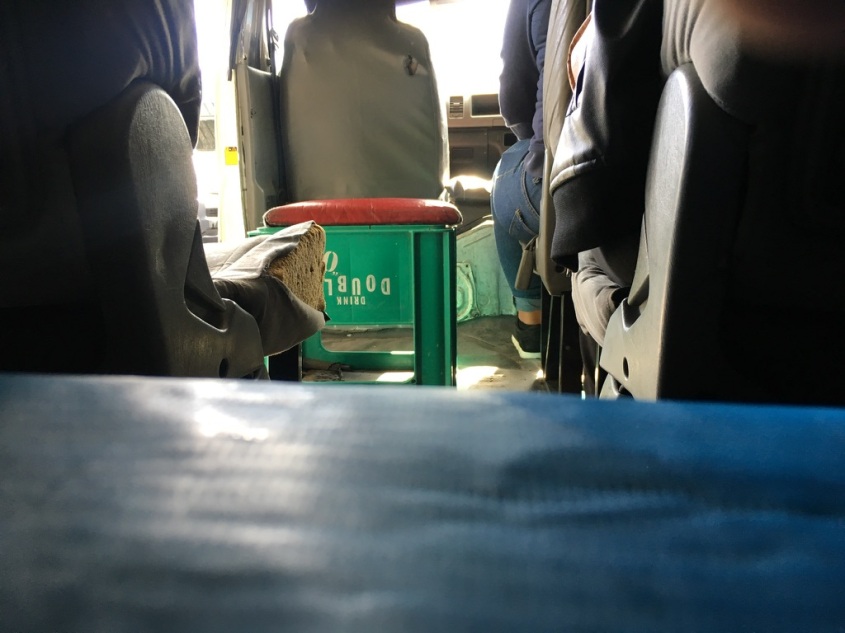
Last year was clouded with public transport related protests across all transportation modes. If it was not the Commuter Bus Drivers, it was the Gautrain, if not them it was the minibus operators. In all of these instances, very little was said about the commuter. Is a protest performed without sympathy? What motivates the unique nature of the tensions between the scheduled and unscheduled operator environments?
To at least get an idea of what to consider when it comes to this we must turn to a fascinating fictional account from Imraan Coovadia’s Institute for Taxi Poetry:
“Taxi companies looked simple, operating clapped-out Hi-Aces and employing, as they did, little more than children from the informal settlements as drivers and general dogs’ bodies, making small money carrying nurses and shop assistants and building-site foremen to and from town. Contrary to appearances, the companies took a sophisticated view of their economic interests. As private entities, they expressed a sceptical view of parastatals like Transnet, which managed the trains and port facilities, and the Golden Arrow Bus Service, which itself was owned by the investment arm of the giant trade union.”
The tension between and within artificialities of formality reflect an important perspective crucially under considered: human organisations are networks of interactions. Classifying formality is genuinely a question of the chosen taxonomy— or at least an interpretation of order. Where for instance organisms would behave in this erratic and seemingly chaotic manner for an outsider, they are rather organised within their circles.
A simple observation in Coovadia’s book highlights on a tactile level an interpretation of the world mirrored by the subsequent protests once too many passengers were poached from them by other operators. At which point the business evolves from what Meshak Khosa argued was black capital formation, and what Paul Browning contends was a community oriented service to multilayered businesses between chaos and order:
“The taxi companies were big business and made big profits, whether we considered their revenue books, or checked in the glove compartment of one of their Hi-Aces. Ninety percent of the local drug traffic— tik and those long pink-and-white Mandrax capsules which separate a man and his wits for a weekend— circulated on the minibuses. Needless to say, the taxi companies were the most substantial patrons of transport poetry in the region.”
Perhaps as one of the few accounts of minibus taxi businesses narrated in story form, there is an important tension to consider. Commuters who use public transportation services are not alone in their plight for mobility and access. While some drivers own their vehicles, many do not and are thus employed by the best owner-bidder. Today, there is only one commuter rail company that is operating against Metrorail, which is the Gautrain— but there aren’t any private companies doing this either in urban centres. In the rail transportation space we see a public private partnership which also provides a bus service that is integrated into its train business (although the initial vision was to use minibuses).

There are few instances where bus drivers could own their vehicles, but most find it more viable to operate for a company which grapples with the vehicles, assets and plans operations. Immediately, the need to dip into protecting commuters when something happens is important. However, for paratransit operators the protests would not come from basic concerns such as wages and hours because the labour market is too competitive there.
In the formal scheduled industry, these wage issues are up for debate, and trade unions need to exist largely because labour is only an input to the company’s overall business. For paratransit it seems, labour is the driving force and one must ask if drivers are captive or free to earn, drive and push the envelope to the last passenger’s destination.
To take you right back to The Institute for Taxi Poetry consider the need to dominate:
“To reach the top of the transport sector, in the turbulent universe of the taxi industry, was a Darwinian effort. One in a thousand survived. Only cunning and tough-minded types ran a proper company, keeping the drivers from wrecking the vehicles, restraining the sliding-door men from pocketing the cash, and sustaining the depredations of the Congress Party plus municipal policemen in search of cold-drink money in the morning and lunch money thereafter.”
Within the first 20 pages or so of the book, there is an immediate sense of place and a deep awareness of the complexity within the transportation industry from a regulatory perspective. For traditional companies, competition was crucial, clean and fair without the hurdles of back payments and twisted arms.
In monopolies it’s actually much less about market actors seeking twists and turns to duck and dive, but more about what we see today in the SoE environment: captive operations and slow adaptations to respond to markets (this comes at a high cost). However, given the frequency of cash moving between hands there is always an allure for the silver nickel Mint and wet-sand scented paper from the national Print.
Then again, with the national transportation direction leaning toward one card, one ticket and one system for travel across all modes street bullies, cash twists and vanishing acts may fade. One meeting I had in 2012 with the SAHA team, revealed that if taxi drivers were paid a fixed income on a month to month basis they don’t only drive better but may generate more revenue too. At one Southern African Transport Conference, Here Schalekamp presented various payment options that could be useful for commuters with high and low internet penetration rates specifically for the paratransit sector. At another Reginal Kgwedi argued that including paratransit in the park-and-ride networks may be a viable option. Then again, Gail Jennings and Roger Behrens present a crucial report on the different options to reforming paratransit services. An economic question now would be: who gets the cash and will they need to protest to get a fair cut like everyone else?
Thank you*
